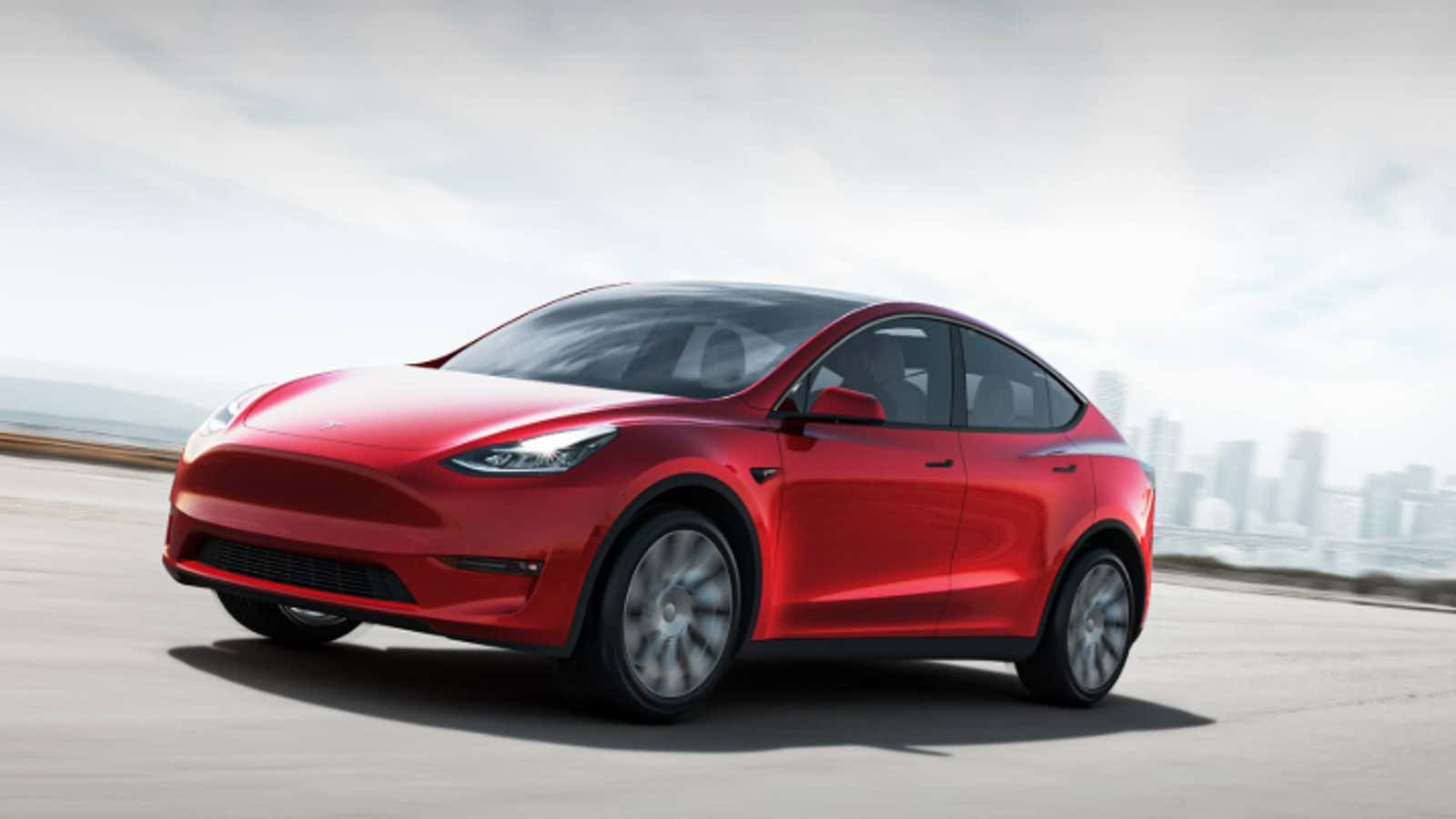The bull case for Tesla is back.
The California carmaker posted a second consecutive profitable quarter (pdf) today, adding another billion to its $6.2 billion in cash reserves. And most of the credit belongs to Tesla’s Model 3 overseas—despite slowing US sales growth, nearly half of the 300,000 of so deliveries in 2019 were to Europe and China.
After years of flirting with bankruptcy, Tesla is posting more consistent profits, cutting costs, growing revenue, and restraining its chief executive Elon Musk from threatening the company’s solvency. The stock, up 12% in after-hours trading, is now far outpacing analysts’ expectations following two years of middling performance.
As Tesla claimed, 2019 looks like a “turning point.” The company is entering its mass-production phase. The importance of its original Model X and Model S is fading as it retools itself to become a global automaker. Tesla now looks capable of delivering 500,000 vehicles this year (most of them the Model 3 sedan and upcoming Model Y crossover) and 1 million as soon as 2022, according to an investor note by equity research firm Wedbush.
We’re also entering a world where Tesla is the cheaper electric car, though not the cheapest. That title will belong to the Chevy Bolt, Nissan Leaf, Hyundai Ioniq, and others selling in the $35,000 range.
But Tesla may soon own a covetable segment of the market, say analysts at auto research company Edmunds. “Tesla got a bit lucky in that the market evolved around them: unplanned, the Model Y might slide right in the sweet spot for the EV crossover market,” now more than half of US car sales, said Jessica Caldwell, executive director of insights at Edmunds. “It has a more prestigious brand than the mainstream hybrid nameplates but comes at a significantly less cost than the rest of the luxury competition.”
So Tesla could find itself in a Goldilocks situation. Its luxury rivals are still too expensive, while the entry-level competitors aren’t attractive enough. The average price for the luxury Audi eTron is $75,524, and the Jaguar iPace is $77,109. Standard EVs, such as the Chevy Bolt, sell for about $38,000. Even the cheapest offering, the Nissan Leaf, lists for $32,000.
Meanwhile, the Model 3 is now selling for $35,000 (as a special order) and Tesla’s Model Y is expected to start at $48,000 with a standard variant coming out later for as low as $39,000. At that price, luxury brands will feel the pinch, and cheaper offerings risk being overlooked. Tesla has already proved it can take over the premium sedan market, beating out rivals such as Mercedes, Lexus, and BMW’s 6 and 7 series with its Model S starting around $75,000.
If it can offer most of the technology in its premium cars at a fraction of the price, Tesla’s Model Y and Model 3 may have a lucrative EV market segment all to themselves for years to come.
Clarification: The story was updated with more pricing information about standard versions of the Model 3 and Model Y.
